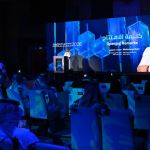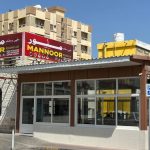The Green Riyadh Program has successfully completed the environmental rehabilitation of Ghudhwana, a tributary of Wadi Hanifa, after 34 months of dedicated work. The program involved planting over 15,000 trees and shrubs along a 5.2-kilometer stretch, connecting several neighborhoods in southwest Riyadh. The goal of the initiative is to enhance the lives and livelihoods of local communities by creating recreational and entertainment spaces. Sustainable environmental practices guided the project, including cleaning operations, waste removal, and flood control channel restoration.
The rehabilitation effort prioritized the planting of locally sourced trees and shrubs that can thrive in the Wadi environment, ensuring sustainability. Recycled irrigation water is efficiently used to meet the needs of the newly planted greenery. This approach aims to increase afforestation rates in the city, which can contribute to lower temperatures and provide a natural refuge for residents and visitors. The project also includes several community engagement features, such as seating areas, children’s play areas, sports facilities, and shaded pathways for walking.
The Green Riyadh Program is focused on rehabilitating and afforesting valleys covering 148 square kilometers, following urban design and sustainability standards. The initiative aims to increase green spaces to accommodate the needs of the growing population. Future plans include creating parks, green main roads, public squares, and allocating green areas in government and public buildings. The goal is to create a more sustainable and environmentally-friendly city for residents and visitors to enjoy.
In addition to the environmental benefits, the rehabilitation of Ghudhwana and other valleys under the Green Riyadh Program also has social and health-related advantages. The project includes various amenities, such as seating areas, play spaces for children, sports facilities, and shaded pathways for walking. These features are designed to promote community engagement, physical activity, and overall well-being among residents. The establishment of water channels for continuous flow and natural drainage, along with the construction of bridges for easier neighborhood access, further enhances the project’s impact on the local community.
The Green Riyadh Program’s focus on sustainable environmental practices and community engagement sets an example for other cities looking to improve their green spaces and overall quality of life for residents. By emphasizing the use of locally sourced vegetation and recycled water, the initiative showcases how urban areas can be transformed into more eco-friendly and people-centric environments. The project’s attention to detail in design, functionality, and accessibility demonstrates a commitment to creating a greener and healthier city for all who live and visit Riyadh.
Overall, the completion of the environmental rehabilitation of Ghudhwana and other valleys in Riyadh under the Green Riyadh Program marks a significant milestone in the city’s efforts to increase green spaces and promote sustainability. With a focus on ecological restoration, community engagement, and enhancing public spaces, the program is not only improving the environment but also improving the quality of life for residents. As the initiative continues to expand and evolve, Riyadh is poised to become a model for sustainable urban development and green living in the region.










